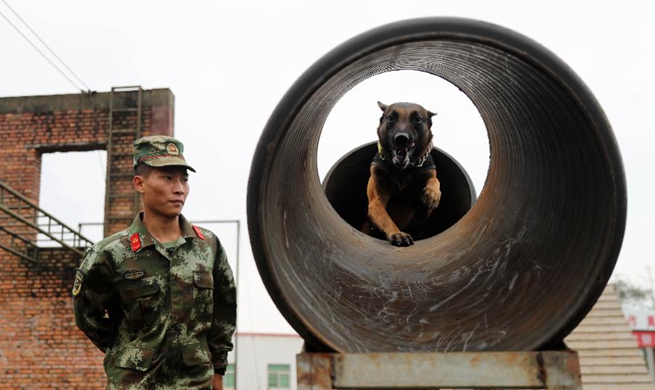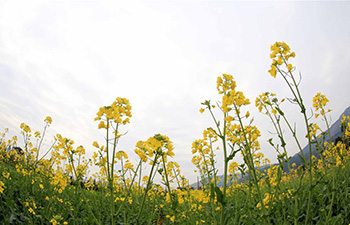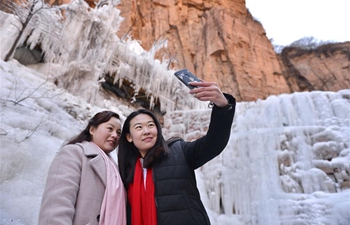LOS ANGELES, Feb. 9 (Xinhua) -- Star-shaped and swallowtail-shaped tiny, dark bumps in fine-layered bright bedrock of a Martian ridge are drawing close inspection by Curiosity Mars rover, the U.S. National Aeronautics and Space Administration (NASA)'s Jet Propulsion Laboratory (JPL) said this week.
This set of shapes are similar to the gypsum crystals formed in drying lakes on Earth, but Curiosity's mission team is considering multiple possibilities for the origin of these features on "Vera Rubin Ridge" on Mars.
Vera Rubin Ridge stands out as an erosion-resistant band on the north slope of lower Mount Sharp inside Gale Crater. It was a planned destination for Curiosity before the rover's 2012 landing on the crater floor near the mountain. Curiosity began climbing the ridge about five months ago and has now reached the uphill, southern edge.
"There's just a treasure trove of interesting targets concentrated in this one area," Curiosity Project Scientist Ashwin Vasavada of NASA's Jet Propulsion Laboratory was quoted as saying in a news release. "Each is a clue, and the more clues, the better. It's going to be fun figuring out what it all means."
Curiosity's inspection may resolve several uncertainties, according to JPL. One is the timing of when the crystal-shaped features formed, relative to when layers of sediment accumulated around them. Another is whether the original mineral that crystallized into these shapes remains in them or was subsequently dissolved away and replaced by something else.
The rover's discovery may point to evidence of a drying lake or to groundwater that flowed through the sediment after it became cemented into rock.
The mission team also is investigating other clues on the same area to learn more about the Red Planet's history.

















